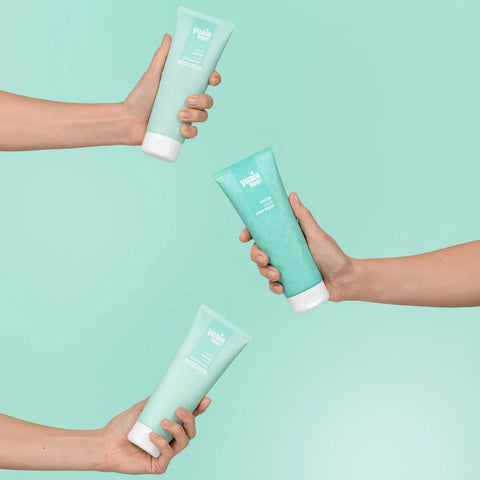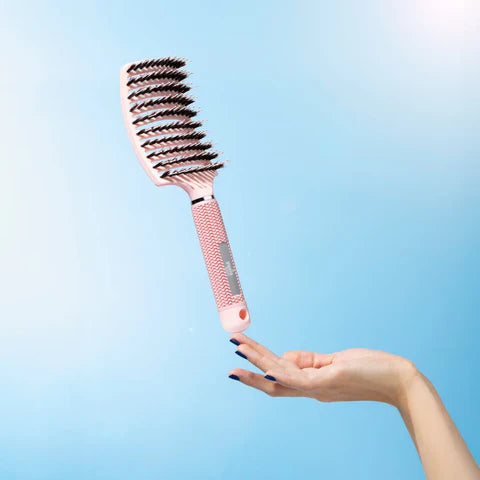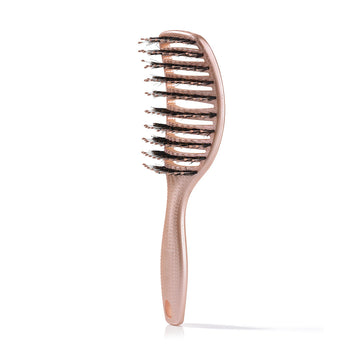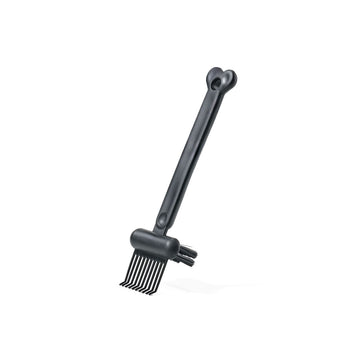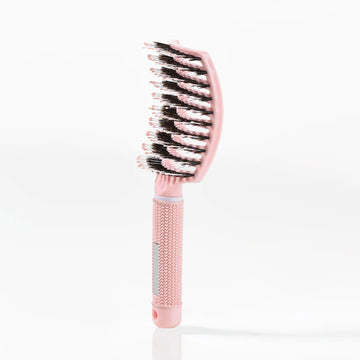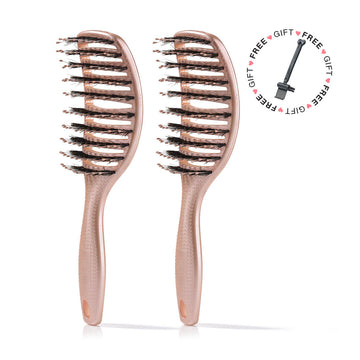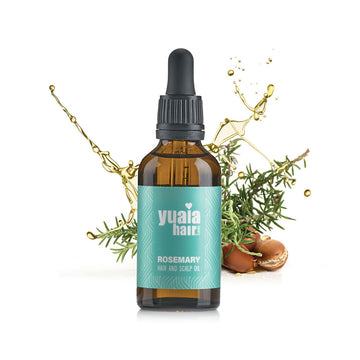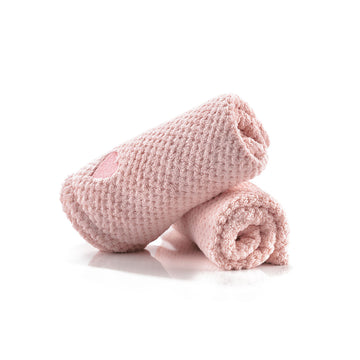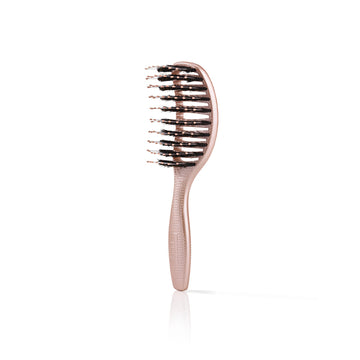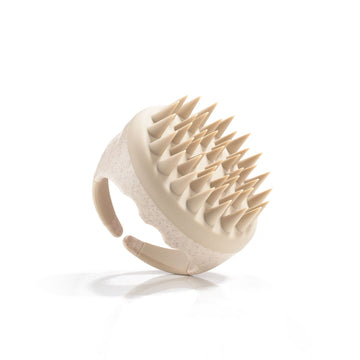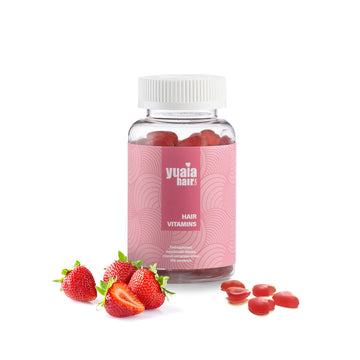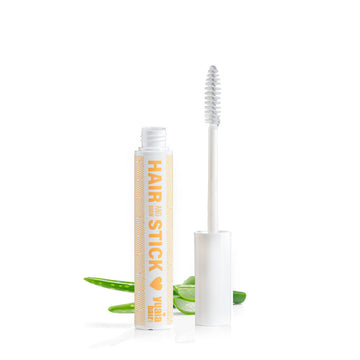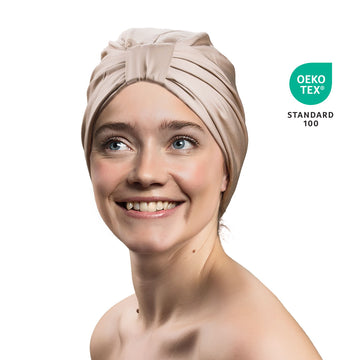Bleaching your hair can be a great way to create a new look, but unfortunately it can also result in damaged and dry hair. If you've ever bleached your hair and then found it to be dry, porous and difficult to style, you know how frustrating it can be. But don't worry - there are things you can do to restore your hair to its former shine and strength. Read on to learn more.
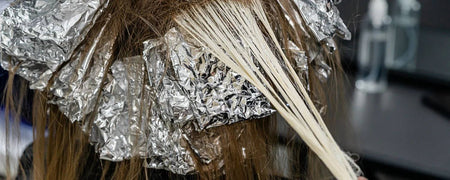
Damaged hair after bleaching: How to restore your hair

by Nanna Bundgaard | 14. April 2023 | Reading time: 6 minutes
Read more about the authorWhat happens when you bleach your hair?
When you bleach your hair, the natural pigmentation is removed using a chemical treatment, typically using hydrogen peroxide. This process can have harmful effects on the hair as it can make it dry and brittle. Hydrogen peroxide penetrates the hair shaft and breaks the bonds between the proteins, which can lead to weakening and breakage of the hair. Furthermore, bleaching can also remove the protective layer of hair and lead to increased vulnerability to external influences such as heat and cold.
Symptoms of damaged hair
If your hair has been damaged by bleaching, you may notice the following symptoms:
-
Dry and brittle hair
-
Porous hair
-
Hair loss
-
Itchy or irritated scalp
-
Difficult to style
If you experience any of these symptoms, it is important to take steps to restore your hair.
How to restore your hair after bleaching
There are several things you can do to restore your hair after bleaching. Here are some of the best methods:
1. Use a moisturizing hair treatment
A moisturizing hair treatment can help restore your hair by adding moisture and nourishment. Choose a hair treatment specially designed for damaged hair and apply it evenly all over your hair. Leave the hair treatment on for 10-15 minutes, then rinse the hair thoroughly.
2. Use a gentle shampoo and conditioner
It is important to choose a shampoo and conditioner that are gentle on your hair. Choose products specifically designed for damaged or color-treated hair and avoid products with sulfates that can dry out your hair. Read more about sulfate-free shampoo here.
3. Cut off the damaged ends
If your hair is very damaged, it may be necessary to cut off the damaged ends. This can help prevent further damage and allow your hair to grow healthy and strong.
4. Avoid hot styling tools
Hot styling tools such as curling irons and straighteners can further damage your hair and make it more porous and dry. Try to avoid using these tools for a period of time until your hair has become more healthy and strong. If you must use hot styling tools, use a heat protectant spray and set the temperature to the lowest possible setting.
5. Protect your hair from the sun
The sun's UV rays can also damage your hair, especially if it's already damaged by bleaching. Use a hat or a hair protection spray when you are out in the sun to protect your hair.
6. Eat a healthy diet
A healthy diet can also help restore your hair. Make sure you eat plenty of fruits, vegetables and proteins as this can give your hair the nutrients it needs. Vitamins such as Biotin, for example, help to maintain normal hair. Here we can highly recommend our hair vitamins, which have a high content of biotin, folic acid and zinc.
7. Get professional treatment
If your hair is very damaged, it may be necessary to have a professional treatment. A hairdresser can help you choose the right treatment for your hair, such as a protein regimen or an oil treatment.
Bleaching your hair can be a great way to create a new look, but it can also result in damaged and dry hair. If you've bleached your hair and are noticing dry, brittle hair or other symptoms of damaged hair, luckily there are things you can do to restore your hair. Use a moisturizing hair treatment, cut off the damaged ends, avoid hot styling tools and protect your hair from the sun. Follow these steps and your hair will soon be healthy and strong again.
FAQ about damaged hair after bleaching
1. What is the cause of damaged hair after bleaching?
Damaged hair after bleaching is often caused by the chemicals used in bleaching products. These chemicals can break down the proteins in the hair and make it more porous and dry.
2. Can I restore my hair after bleaching?
Yes, it is possible to restore your hair after bleaching. Use a moisturizing hair regimen, avoid hot styling tools and protect your hair from the sun.
3. How long does it take to restore damaged hair?
Damaged hair can take varying amounts of time to restore, depending on the degree of damage. Some people see results within weeks, while others may take several months.
4. What is the best way to avoid damaged hair after bleaching?
The best way to avoid damaged hair after bleaching is to make sure to protect your hair and give it the necessary care. Use a hair conditioner regularly, avoid using hot styling tools and protect your hair from the sun. It is also important to follow the instructions on the bleaching product carefully and avoid leaving it in the hair for longer than indicated.
5. Can I bleach my hair again if it is already damaged?
It is best to avoid bleaching your hair again if it is already damaged. Bleaching can make your hair even more porous and dry and result in further damage. It is better to focus on restoring your hair and giving it the necessary care.
6. How often should I use a hair treatment after bleaching?
It depends on the degree of damage to your hair. If your hair is very damaged, it may be necessary to use a hair treatment several times a week to restore it. If your hair is less damaged, using a hair treatment once a week may be sufficient.
7. How do I know if my hair is damaged after bleaching?
Symptoms of damaged hair after bleaching can include dry and brittle hair, split ends and loss of shine. If you experience these symptoms after bleaching your hair, it may be damaged.
8. Are there any natural ways to restore damaged hair after bleaching?
Yes, there are several natural ways to restore damaged hair, including using coconut oil or aloe vera gel, massaging the scalp regularly, and eating a healthy diet rich in nutrients like proteins, fatty acids, and vitamins. However, it is important to remember that natural remedies are not always sufficient to restore damaged or broken hair and that it may be necessary to seek professional help.
Get a 10% discount code sent to you
Receive the best tips and tricks for your hair from Lotte and Nanna 🥰
 2-4 day UK delivery
2-4 day UK delivery
 25.000+ satisfied customers
25.000+ satisfied customers
 Satisfaction Guarantee
Satisfaction Guarantee




